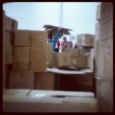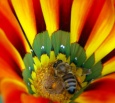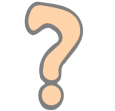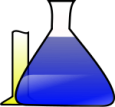Resources: Primary Science
- [[Topics/Astronomy|Astronomy]]
- [[Topics/E-safety|E-safety]]
- [[Topics/Blogs|Blogs]]
- [[Topics/E-skills|E-skills]]
- [[Topics/Literacy|Literacy]]
- [[Topics/Curriculum development|Curriculum development]]
- [[Topics/Progression|Progression]]
- [[Topics/Curriculum development|Curriculum development]]
- [[Topics/Learning objectives|Learning objectives]]
- [[Topics/Force|Force]]
- [[Topics/Graph|Graph]]
- [[Topics/ICT|ICT]]
- [[Topics/Investigation|Investigation]]
- [[Topics/Living things|Living things]]
- [[Topics/Using images|Using images]]
- [[Topics/Materials|Materials]]
- [[Topics/Measuring|Measuring]]
- [[Topics/Study skills|Study skills]]
- [[Topics/Patterns|Patterns]]
- [[Topics/Questioning|Questioning]]
- [[Topics/Science|Science]]
- [[Topics/Using images|Using images]]
Relevant resources
| Astronomy | Stars in the sky: what's up? | |

|
Use a software planetarium and encourage students to think about astronomy This activity offers an opportunity for whole class(ta) discussion(ta) and questioning(ta) centred around the use of the Stellarium. It also affords good opportunities for self-directed study or homework(ta) extensions, including perhaps the use of free mobile apps(tool) (see below). There are also opportunities for some cross curricula(i) discussion of geography (navigation by stars) and history or literacy in relation to the ancient world.
| |
| Blogs | Digital Reporters at Camp Cardboard | |

|
Children using iPads to blog about Cardboard Sculptures This activity is a cross curricula(subject) activity, involving a collaborative(tool) approach, giving children the opportunity to work together on a blog. Children were encouraged to engage in group talk(ta) and discussion(ta) in the classroom to reflect on the activity they were to report on. The activity furthers e-skills(topic) and e-safety(topic) through the use of whole class(ta) participation. The specific art activity provided a great stimulus for the blogging. Equally, however, this approach could be applied to any event in or out of school. The use of blogging and social media gave the opportunity for children to share their ideas with a wider audience, and also gave opportunities for real-time feedback to their work. The use of hand-held technology also enabled active learning(ta) as the portability of the iPads and iPods allowed them to be used outside the classroom.
| |
| Force | Building bridges from a piece of A4 paper | |

|
A bridge too far... This activity supports a number of learning types:
| |
| Force | What floats and what sinks | |

|
Is getting in the bath a way to lose weight? This activity supports a number of learning types:
| |
| Force | Force in the early years | |

|
Thinking about the language of force This lesson idea highlights the scientific language(ta) around the topic of force, and through group work(ta) and whole class(ta) dialogue(ta) engages pupils in inquiry(ta) and the scientific method(ta) surrounding force.
| |
| Force | What makes a good paper airplane? | |

|
| |
| Force | Which material makes a good parachute? | |

|
A simple investigation into parachutes and air resistance This activity supports a number of learning types:
| |
| Graph | Variation of human characteristics - Visualising Class data | |

|
A big survey of ourselves, measuring hands, feet and more The lesson offers the opportunity to explore measurement, relationships between measurement, and ways to visualise and summarise this data. The use of ICT(i) allows the teacher to enter data and for pupils to immediately see the impact this has on the pie chart and frequency tables (which are automatically updated). This also allows the teacher to change the 'range' for the frequency counts, and discuss with pupils the impact of this on the pie chart, and whether this is a good representation - encouraging the use of mathematical language(ta) and scientific method(ta) throughout. In collecting the data pupils have opportunity for some self-directed group work(ta) - to measure various lengths as described below - and the teacher could use whole class(ta) questions(ta) to explore the strategies taken to conduct this investigation(ta).
| |
| ICT | Primary Science Curriculum Activities with Sensors | |

|
A compendium of investigations with sensors in primary science This resource provides a set of activities to engage pupils in inquiry(ta) based learning in the scientific method(ta), often making effective use of ICT(i) and sensors(tool). The activities involve whole class(ta) questioning(ta) and collaborative(ta) group work(ta).
| |
| ICT | Infant and Primary Science Activities with Sensors | |

|
A compendium of investigations with sensors in primary science. This is a compendium of activities to engage pupils in inquiry(ta) based learning in the scientific method(ta), often making effective use of ICT(i) and sensors(tool). The activities involve whole class(ta) questioning(ta) and collaborative(ta) group work(ta).
| |
| ICT | IT in Primary Science | |

|
A whole book of ideas for using generic ICT tools in science This book is a compendium of lesson ideas with ICT(i) as a key focus for use in inquiry(ta) based learning and the scientific method(ta). It offers opportunities for use of group work(ta) and collaboration(ta) as well as whole class(ta) questioning(ta).
| |
| Investigation | Persuasive argument and evidence-based conclusions about the best car | |

|
Got a new motor? Talk about your investigation like a scientist This activity involving inquiry(ta)aims to develop children’s ability to support their conclusions with evidence. The teacher will model(ta) and encourage the use of the language(ta) that children require to discuss or present their data. The teacher can explain their rationale using the lesson below.
| |
| Learning objectives | Writing Learning Objectives in Primary Science | |

|
How are learning objectives supposed to work? How can one achieve mastery in writing learning objectives? This resource encourages teachers to think about ways to link learning objectives(ta) to the curriculum which also helps to conceptualise their teaching schemes. It also helps children to understand what they are learning and what they are aiming for. The resource brings together key ideas, looking at specific outcomes from activities, vocabulary(ta), differentiation(ta), resources and curriculum development(topic) and short term planning(ta). It could be used as a 'refresher' on ideas when planning lessons.
| |
| Literacy | Developing Language in Primary Science | |

|
Language development and the use of appropriate vocabulary(ta) is highlighted as important across the curriculum. Incorporating this consideration into science planning(ta) is important for meeting the target of developing language. The importance of language and talk in science – including through group work(ta), and Whole class(ta) dialogue – is highlighted elsewhere (and in the resource) but includes the ability to explain concepts, understand synthesising ideas (including those from other people and texts), and the need to read and write for different purposes, (including conceptual understanding, data presentation, etc). These are key ideas in communicating the scientific method(ta) | |
| Living things | Classifying and organising living things using images | |

|
Find different ways to classify living things This lesson offers opportunities to explore ways to classify living things as well as characteristics which might be relevant, and how to address difficulties that may arise when trying to classify things in this way. The activity may be enhanced by the use of ICT(i) software (e.g. Picasa) but could be carried out with paper-based resources.
This lesson presents a good opportunity for small group work(ta) and some inquiry(ta) into how we classify; and why some classification methods might be more useful, or more scientifically interesting than others. There is also a good opportunity to use different sorts of questioning(ta); to encourage pupils to question each other; to engage in peer assessment(ta) and to focus discussion(ta) on the scientific method(ta) using key vocabulary(ta). | |
| Materials | Heating and Cooling Materials | |

|
What happens when you heat and cool materials. In this inquiry(ta)-based lesson plan, students devise a ‘fair way’ to compare (mostly) physical changes in materials such as cheese and chocolate. They ask and answer questions about how to heat the materials and about using materials of the same size and shape. They also predict how substances may change and observe what actually happens.
The purpose of the lesson is to both support Year 2 students work on changing materials and to develop their ideas about ‘fair tests’. The activity thus offers an opportunity to assess(ta) how well students plan a test and observe change. | |
| Measuring | Measuring Light - Does light shine through everything? | |

|
Using a sensor to see what's transparent and translucent This lesson involves the use of higher order questioning(ta) on scientific method(ta) topics to engage pupils in an inquiry(ta) relating to the nature of light, its measurement, and the use of sensors.
| |
| Measuring | Measuring Temperature - Cold and Hot | |

|
Put a number on the meaning of hot and cold This lesson involves the use of higher order questioning(ta) to engage pupils in an inquiry(ta) relating on how to record temperature and the use of sensors.
| |
| Measuring | Monitoring Temperature - Day and Night | |

|
What happens to the room's temperature when I'm not here? This lesson involves the use of higher order questioning(ta) on scientific method(ta) topics to engage pupils in an inquiry(ta) relating to recording temperature and the use of sensors.
| |
| Measuring | Measuring Light - Light and Dark | |

|
Light can be light, dark or somewhere in between This lesson involves the use of higher order questioning(ta) on scientific method(ta) topics to engage pupils in an inquiry(ta) relating to the nature of light, its measurement, and the use of sensors.
| |
| Patterns | Exploring Pattern | |

|
Exploring patterns in mathematics Each chapter of this tutorial highlights the study skills(topic) required to work through the real world examples and activities given. There are problems to be solved, some of which involve higher order(ta) thinking skills (for example, being asked to correct a set of instructions), and all of which encourage the use of mathematical language(ta) and mathematical thinking(ta). The resource could also be used in class, or as a useful homework(ta) pack.
| |
| Progression | Developing Progression in Primary Science | |

|
Progression and the wonders of 'one-ness' and 'two-ness' A first part on ‘developing progression in science investigations’ could be used to prompt discussion on how far we expect pupils to develop, and the sorts of inquiry(ta) which encourage this.
The second part, 'indicators of Level 1 and 2ness', provides a useful set of criteria for assessing national curriculum levels. These criteria prompt thinking about assessment(ta) levels in curriculum development(topic). A concrete outcome of the activity may be to keep such criteria in a mark book for day-to-day use. | |
| Questioning | Questioning Techniques in Primary Science | |

|
Asking questions about what students saw, measured, understood. About what could happen, happened, should have happened... and more. This resource offers the opportunity to think about the appropriate questions to ask at various stages of investigation and how to ensure high quality questioning(ta) at these points. This is obviously an important classroom skill, one which has a strong impact on children's progression, yet which can often be lacking in classrooms which tend to focus on fact-based recall questions. This resource offers an opportunity to think about such an activity and some prompts for applying questioning techniques. Although they are written for science, these suggestions could be used as prompts for application in other subjects.
| |
| Science | Primary Science Investigation | |

|
What is involved in 'doing a science investigation'? And what is there to assess? This resource describes the process of doing an investigation for inquiry(ta)-based learning. Teachers could share practice(i) and lesson planning(ta) ideas using the list of pupil skills (e.g. observing). It also lists learning goals for investigation skills (e.g. observing, predicting, problem solving) and ideas for exploring different types of practical work(ta) in science.
It could be used for discussion(ta) or brainstorming on how to apply these skills to different content areas. The resource emphasises engaging pupils in the scientific method(ta) - using higher order(ta) thinking skills, group work(ta) and dialogue(ta) to facilitate knowledge building(ta)/reasoning(ta). | |
| Using images | Organising images for a narrative | |

|
Write an essay without words The lesson encourages students to think about how to portray their knowledge through narrative(ta) - which may engage some students who would usually be less interested. The lesson encourages students to think about how to capture valuable information and ensure that key elements are highlighted while not 'overloading' the viewer with data. The lesson can be tailored to any age group - for younger pupils the task could be to take before and after photos and label them. More advanced pupils might explore time-lapse photography. Pupils should be encouraged to think about how this relates to the scientific method(ta) The task is interactive and could be conducted as a group work(ta) activity or as an element of an inquiry-based learning project. It could also lend itself to whole class(ta) dialogue(ta) and the use of ICT(i) including 'clicker' response systems for assessment(ta) and questioning(ta).
| |

